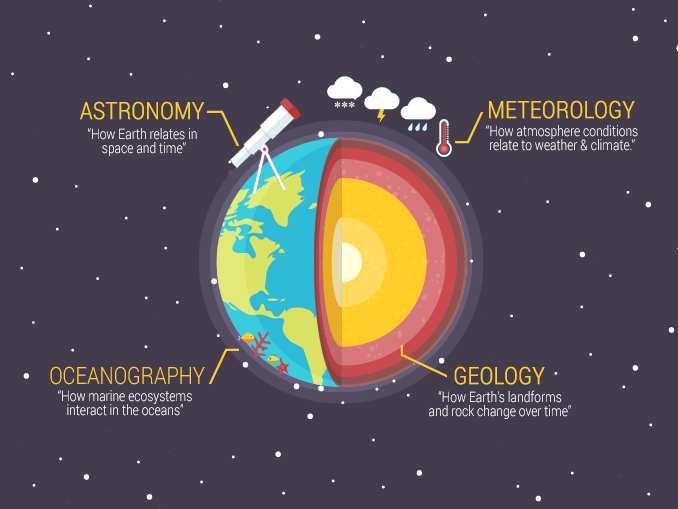Smallsat Constellations for Earth Sciences
The four main branches of Earth sciences or Geoscience that directly benefit from smallsat constellations.
Credit: Australian Environmental Education
Turning fundamental measurements into usable services
Earth sciences need sustained, harmonised data: oceans, atmosphere, land, and cryosphere observed as a system. Smallsat constellations make this practical with distributed sensors, frequent revisit, and agile tasking. The commercial value emerges when measurements are packaged as services—calibrated data streams with provenance, latency guarantees, and cross-sensor fusion delivered via APIs.
The winning playbooks standardise buses and ground software to add instruments like plug-ins. Calibration is treated as a product, not a paperwork exercise, and cross-mission harmonisation becomes part of the brand. Universities, startups, and agencies may opt to avoid bespoke missions and instead subscribe to streams aligned to their models.
Commercial takeaways
Vendors increasingly position their offer as “science-grade data without the satellite programme,” delivering harmonised, provenance-rich streams by subscription, without the heavy capital expenditure. The customer base spans research institutes, climate-tech builders and public agencies that prefer to consume measurements rather than run missions. Product lines are organised around families of variables, with tasking and archive access layered on. Discovery is shifting to cloud data marketplaces and modelling platforms. Adoption has been helped by open harmonisation methods, replicable reference cases and community challenges that seed new applications.
Smallsats don’t replace science—they industrialise it into reliable inputs that other industries and organisations can build on.
